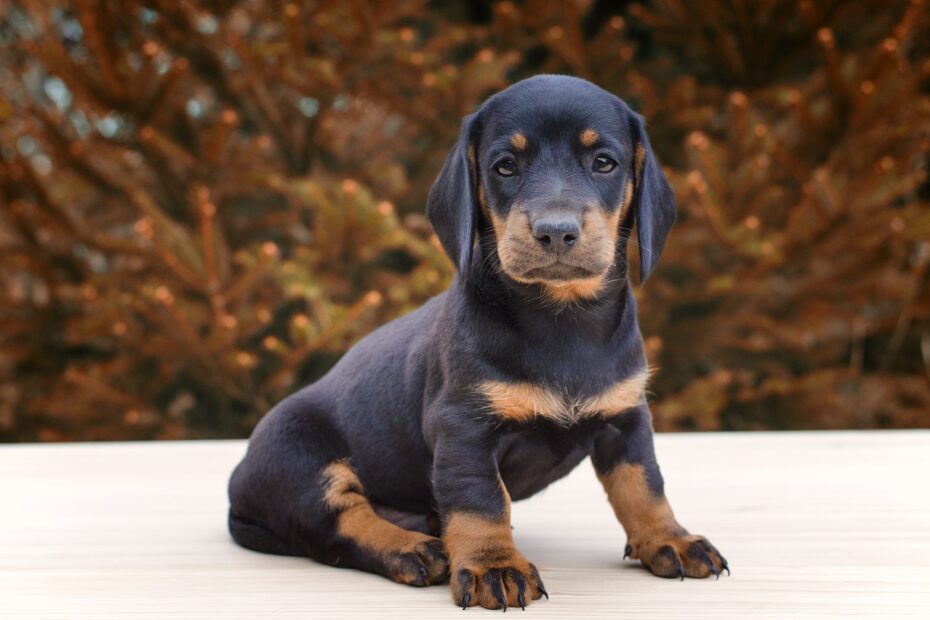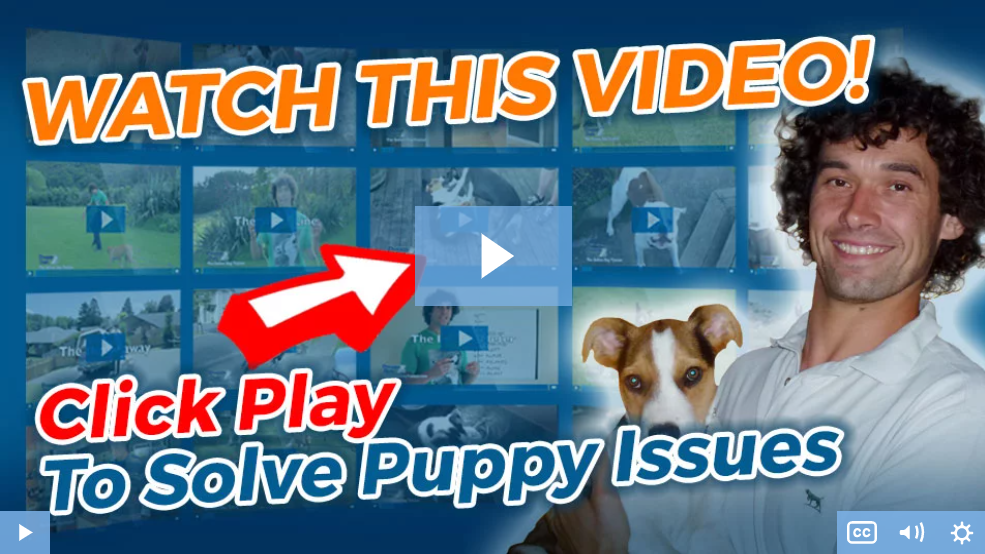It’s no secret that potty training can be a pain in the proverbial. So learning how to train a puppy to use puppy pads can often be an ideal option…
…Especially if you’re looking for an easy-to-implement solution to avoid the frustrations that come with the potty training process.
Having said that, no training solution is exempt from having a few pitfalls. And unfortunately, puppy pads aren’t an exception to the rule.
Because when things go wrong, they go ‘very wrong.’ Which can often lead to wasting more time on your hands and knees cleaning up unwanted messes than enjoying quality time with your beloved pooch.
Anyway, before we get into the correct way to introduce puppy pads, a word of warning.
While puppy pads are great for getting your pup used to potty familiarization. The end goal should always be to move on from using puppy pads and have a fully potty-trained puppy who knows the ins and outs of potty training like the back of their paw.
This is why before you do anything else, I’d highly recommend taking a few minutes to check out the Puppy Coach Program From Dan Abdelnoor Over At The Online Dog Trainer. (see video below)
While it’s not an overnight cure for solving all of your pup’s toileting habits. I guarantee that if you watch the video, take notes, and actually implement what Dan teaches in this unique program. You’ll be well on your way to having a fully potty-trained pup sooner rather than later.
Anyway, here’s the link to take a look: Click Here To Discover How To Quickly Solve ALL Of Your Puppy’s Potty Training Problems While Setting A Solid Foundation For Their Future… Even If You’ve Tried & Failed Before!
(video will open in new window)
Benefits Of Training A Puppy To Use Puppy Pads
As previously mentioned, puppy pads are a great solution for getting the potty training process started on the right foot.
However, they’re also hugely beneficial for teaching your pup location control.
See, even though you aren’t teaching your pup to do their business outside, you’re still building up the habit of teaching them to go in the same location every time. (provided you don’t keep moving the pad, that is)
So when the time does come to eventually move things to the great outdoors, they’ll be much more likely to stick to one location.
Pads are also a great alternative if you happen to live in an apartment and you don’t have immediate access to an outdoor toileting area.
Better still, they’re also a handy option for pups who haven’t yet developed the confidence to go outdoors. Or for particular breeds who don’t fare too well in cold, wet weather. (for instance, Chihuahuas)
Related Post: What To Do If Your Dog Refuses To Pee Outside
What About The Drawbacks
While there a quite a few benefits of puppy pads, I still think it’s fair to mention some of the potential drawbacks to this option so you can ultimately make an informed decision on what’s best for your pup.
For instance, although pads are great for indoor use in the short term, if used for too long, they can often be difficult for your pup to make the transition to moving outdoors when the time comes.
This isn’t to say it isn’t possible. It’s just going to take a little more work on your part to make the move as quickly and seamlessly as possible.
Another potential problem with pads is that they can often encourage your pup to think that they can go to the bathroom anywhere they want in the home.
Although you can limit the chance of this happening (more on this below.) It’s still a possibility that they’ll seek out other locations in the home to do their business away from your watchful eye.
Not only can this get messy very quickly, but it can also set you on constant edge if you allow it to become a persistent problem.
Remember the Puppy Coach Program I mentioned earlier?
Now would be the time to sneak off and take a quick peek.
Even if you’ve got more than enough experience potty training, there’s probably still a tip, trick, or technique that you haven’t thought of that will come in handy at some point or another.
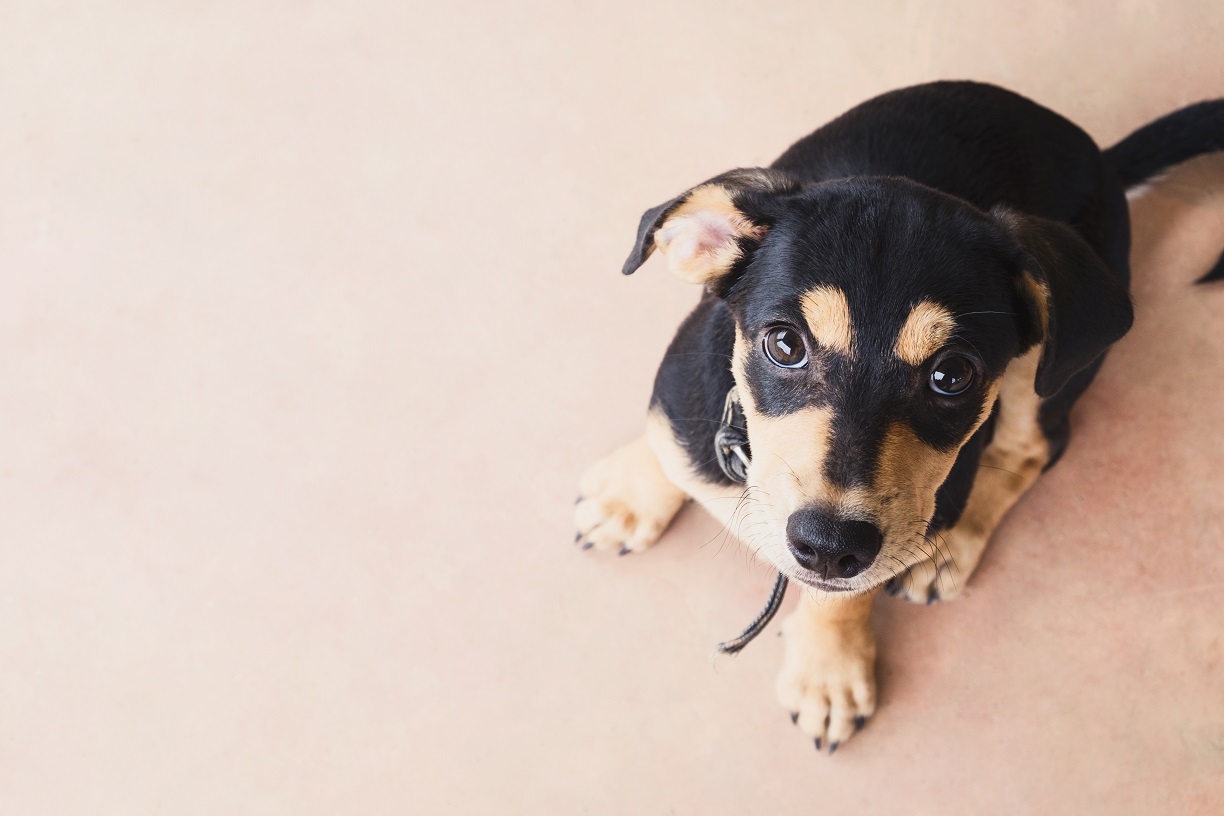
How To Train A Puppy To Use Puppy Pads
While there are multiple ways to get your pup fully compliant with using puppy pads. Some methods are ultimately going to give you a lot more bang for your buck while saving you hours of potential hassle when it comes to getting them up to speed.
So take a look at the following to see how they can ease you into the process.
Pick A Location & Stick With It
First things first, pick a location you want your puppy to use the pads and stick with it.
Far too many times have I seen owners changing the location in an attempt to teach their pup the ropes.
The end result? …your pup gets confused and eventually assumes they can go where they please.
This is ultimately a recipe for disaster. And worse still, it can take a lot of painstakingly difficult work to undo the damage caused by changing up the location.
Now, ideally, you should try and keep the pad in a location nearer to the yard, as it’ll make the process a lot easier if you eventually transition to taking things outside at a later date.
What’s more, it’ll make disposing of old pads a little easier to deal with as you won’t have to waft the unwanted smell of pee into every room of the house.
Familiarize Your Pup
Familiarization is going to be a key component if your want to get anywhere fast.
It might sound unnecessary, but letting your pup have a walk around on the pad or even a good old sniff is a great starting point.
If you wanted to double down on the process, it’s always a great idea to get a recent scent of their pee from a previous pad (or, dare I say, the last place they had an accident) and leave it next to the new pad to build familiarization.
Why?
Because pups are highly sensitive to smells. In fact, if you want to get technical, they have roughly 300 million olfactory receptors compared to humans, who only have 6 million.
In laments terms, this means their sense of smell is over ten thousand times more sensitive than our own.
So it’s safe to assume that they’ll be able to pick up on the scent of a previous potty session… even if we can’t.
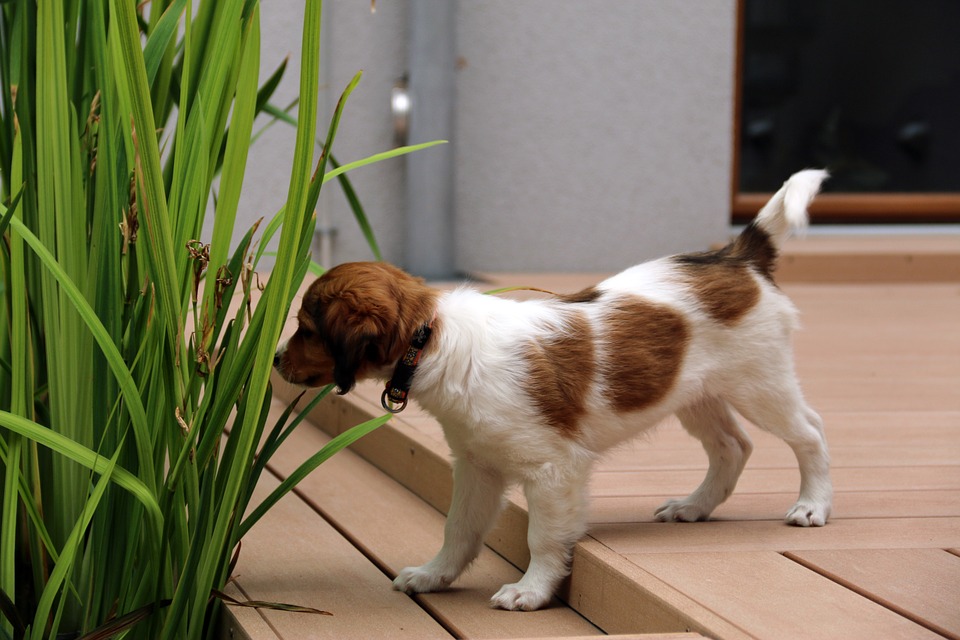
Watch Out For Warning Signs
Being the boundless ball of energy that they are, puppies are usually too busy to give off any warning signs they need to go until it’s too late.
With this in mind, it’s important to remain vigilant, especially in the early days of bringing home your new pup, to limit the number of accidents.
Let me just be clear though. Try as you might, avoiding accidents completely isn’t an ideal expectation. They are going to happen, and you are going to have to spend at least some time mopping up a pee-soaked floor.
Having said that, you can greatly reduce how much time you spend scrubbing the carpet by paying close attention to any warning signs your pup needs to go.
For instance, sniffing the floor, pacing up and down the hallway, or even whining for no apparent reason are all clear signs that your pup could be about to turn the carpet a darker shade of yellow.
So if you spot any of these signs, you need to pick up the pace and take them to their designated spot ASAP before things get messy.
A great tip I’d always recommend is popping a short leash on your pup when they’re displaying signs they need to go. This way, they won’t be inclined to sneak off and download the contents of their bladder on your nice clean bedsheets when your back is turned.
To give yourself a fighting chance, I’d also recommend you start taking notes and getting a rough idea of your pup’s pee regular peeing habits so you can learn to preempt when they’re likely to go.
As a rule of thumb, your pup should only be able to hold their bladder to a maximum of one hour in comparison to their age in months.
So, for instance, if your pup is only 3 months old, the absolute maximum they’d be able to hold it in would be approximately 3 hours.
In addition to this, pups (and all dogs actually) generally need to go shortly after mealtimes and also upon waking up from a nap.
So keep this in mind to limit the number of accidents.
Create Positive Associations With The Pad
Like I said earlier, accidents are going to happen. And while you can limit the number of accidents by using some of the techniques above. You can increase your chances of success tenfold by creating a little positive association with the puppy pad.
Now, before we get into how this works, it’s important to remember to never ever scold or punish your pup for missing the mark every once in a while. This will often create negative associations with the pad, which is the opposite of what we’re going for here.
Instead, it’s simply about rewarding your pup when they get things right and nothing more.
Here’s how it works…
Next time your pup is showing signs they need to go (sniffing, pacing, etc.) Head over to their designated location and wait for them to do the deed.
If they miss the mark, don’t worry. In fact, don’t react at all.
Just clean up the mess and do your best to encourage them to go in the right place next time.
If, however, their aim is true and they hit the intended target, do your best to throw a little praise party by giving your pup lots of attention and, of course, a few treats to let them know they’ve done well.
While it can take several attempts for your pup to pick up on the fact that the puppy pad is where the magic happens. Eventually, they’ll start to get the message that peeing on the pad is a good thing.
Related Post: Solved! How To Toilet Train A Puppy In 7 Days – Housetrain ANY Dog Now!
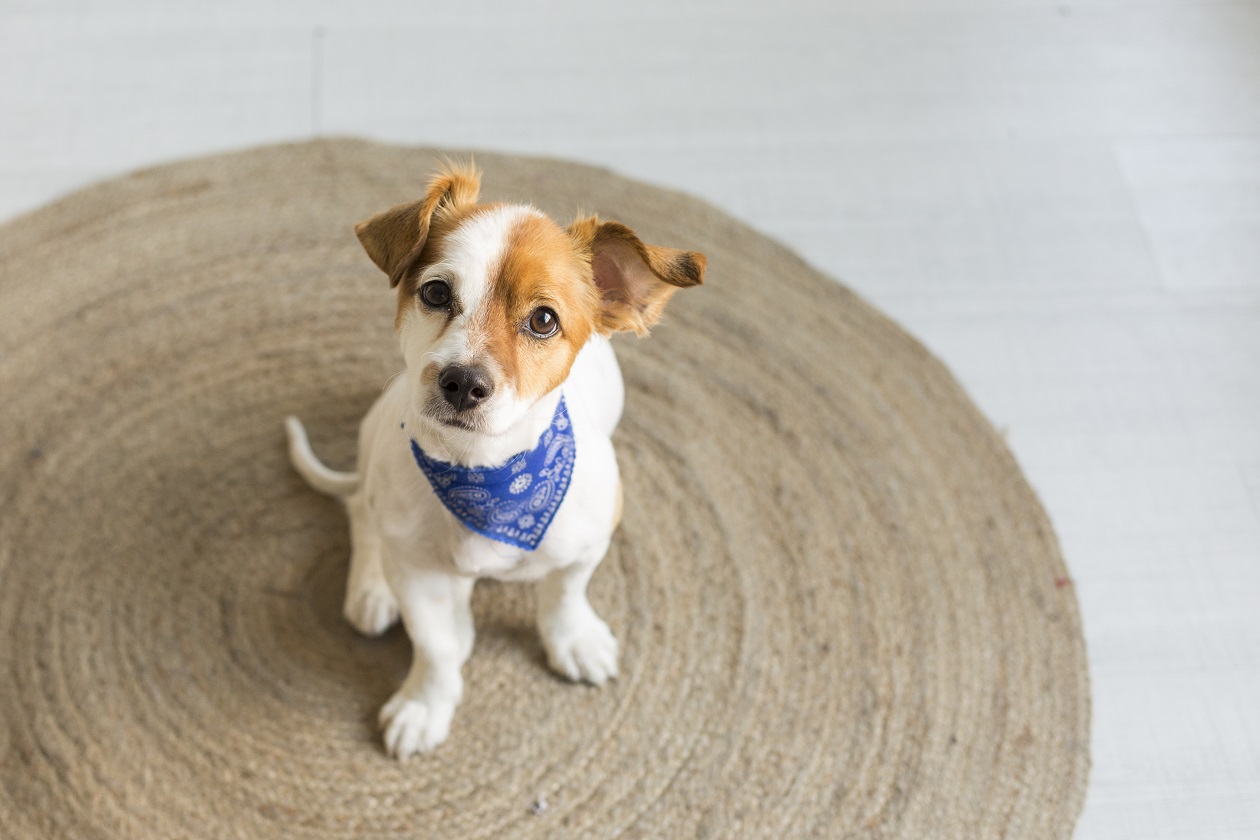
Moving On From Puppy Pads
Although puppy pads are a great start for getting your puppy familiar with the potty training process. It’s by no means the final hurdle when it comes to getting them fully potty trained.
Again, unless you have a very specific reason to not take training any further, I’d highly encourage you to take the next step and move things along when it’s reasonable.
Just remember that nothing comes easy, and there will be times you’ll need a helping hand when things don’t seem to be going your way.
And this is why I always recommend working your way through the Puppy Coach Program to get your pup fully up to speed in the shortest times possible.
To give you a little more insight, the Puppy Coach Program is a short but very effective course designed by Dan Abdelnoor.
It’s also just a small part of what Dan teaches at his membership site over at The Online Dog Trainer. So if you haven’t had a chance to check out all the training available, now would be a great time to get your fill.
All in all, potty training is just that… Training.
And while some pups will take to it like a duck to water, there will be others that need a little more patience and guidance.
But I guarantee that if you follow the advice above but more importantly, stick with it, you’ll have a fully potty trained pup sooner than you think.
